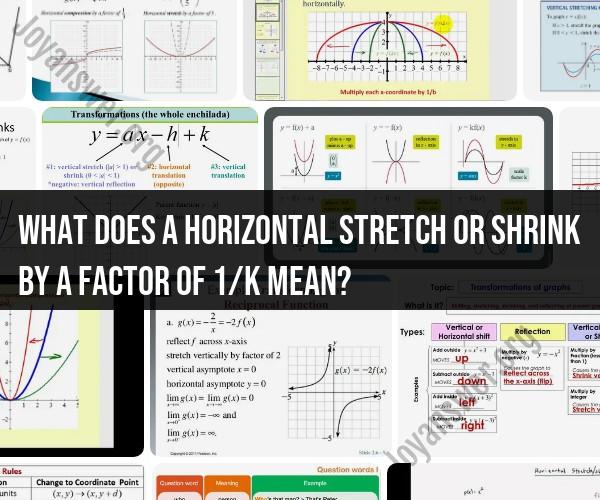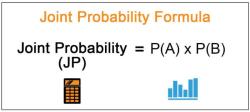What does a horizontal stretch or shrink by a factor of 1/k mean?
Horizontal stretch and shrink by a factor of 1/k is a transformation that affects the shape of a function's graph along the x-axis. This transformation is applied to a function in the form of y = f(kx), where k is a positive constant.
Horizontal Stretch and Shrink by a Factor of 1/k:
Stretch (Compression) by a Factor of k: If k > 1, the graph of y = f(kx) is horizontally compressed (or stretched) compared to the graph of y = f(x). The graph is narrower and closer to the y-axis. The stretching factor is k.
Shrink by a Factor of 1/k: If 0 < k < 1, the graph of y = f(kx) is horizontally stretched compared to the graph of y = f(x). The graph is wider and farther from the y-axis. The shrinking factor is 1/k.
Mathematical Interpretation:
Let's consider a function y = f(x). When we apply a horizontal stretch by a factor of k to this function, we substitute x with kx. The new function becomes y = f(kx). This means that for any x-coordinate on the original graph, we are now evaluating the function at kx, effectively compressing or stretching the graph horizontally.
Similarly, when we apply a horizontal shrink by a factor of 1/k, we substitute x with (1/k)x. The new function becomes y = f((1/k)x), which means that for any x-coordinate on the original graph, we are now evaluating the function at (1/k)x, effectively shrinking the graph horizontally.
Effect on Graph:
Stretch (Compression) by a Factor of k: The graph becomes narrower, and the points on the graph are closer to the y-axis. The horizontal distances between points are reduced by a factor of k, leading to a compressed appearance.
Shrink by a Factor of 1/k: The graph becomes wider, and the points on the graph are farther from the y-axis. The horizontal distances between points are increased by a factor of k, leading to a stretched appearance.
Example:Consider the function y = x^2. If we apply a horizontal stretch by a factor of 2 (k = 2), the new function becomes y = (2x)^2 = 4x^2. The graph is narrower compared to y = x^2. If we apply a horizontal shrink by a factor of 1/2 (k = 1/2), the new function becomes y = (1/2x)^2 = 1/4x^2. The graph is wider compared to y = x^2.
Horizontal stretch and shrink by a factor of 1/k is a powerful concept in mathematics and has applications in various fields, including physics, engineering, and economics. It allows us to manipulate and analyze functions to better understand their behavior.













